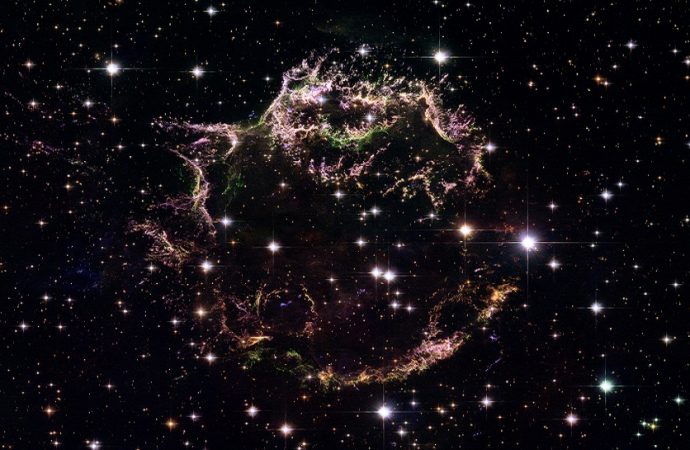Is it possible for a supernova explosion hundreds of light-years away to cause mass extinctions on our planet?
This may well be the case, as a new study suggests this is what happened roughly 2.59 million years ago, says Tech Times.
One of these explosions may have been a contributor to a minor mass extinction. It sent out high velocity charged particles called cosmic rays that were quite possibly responsible for the die-out at the end of the Pliocene era, say researchers.
![Supernova explosoin [Shutterstock]](http://cdn.inquisitr.com/wp-content/uploads/2016/07/shutterstock_262702817-670x670.jpg)
Co-author of the study, and an expert from the University of Kansas, Adrian Melott, says that around the same time that a relatively close supernova explosion took place, a vast drought struck Africa, turning many of its forests into savanna. This was followed by the occurrence of repeated ice ages, the cause of which is unknown. “It’s controversial,” he said. “But maybe cosmic rays had something to do with it.”A supernova happens when there is a change in the core of a star. This can occur in one of two ways. The first way is found in binary star systems, i.e., two stars orbiting the same point. One of the stars, a white dwarf, steals matter from the other. As its mass increases, its temperature along with the pressure inside it increases until nuclear fusion re-ignites. The white dwarf is so dense that this fusion spreads rapidly out from the center and releases such a large amount of energy that it literally blows the star apart.
The second type occurs at the end of a single star’s lifetime. The dying star runs out of fuel and some of its mass flows into its core. The core eventually becomes so heavy that it cannot withstand its own gravitational force and collapses. This collapse results in a supernova explosion.
For the purpose of the study, Melott and his colleagues created computer models that calculated how the atmosphere and climate of the earth would be affected by supernovas. Special attention was given to supernovas that occurred around 300 light-years away, as they suspect two occurred relatively recently, the first being between 6.5 and 8.7 million years ago, with the second, thought to be linked to the Pliocene-Pleistocene mass extinction, being a mere 1.7 to 3.2 million years ago.
According to Melott’s initial thoughts, 300 light-years is not close enough to have much effect, and he was therefore surprised by what the study revealed. Their calculations suggest that a supernova occurring 300 light-years away would create surge of cosmic radiation resulting in night sky so bright that the sleep patterns of prehistoric animals would be disrupted for weeks.
“The big thing turns out to be the cosmic rays,” said Melott. Terrestrial animals and those in shallower parts of the ocean would have been exposed to these rays. Although high energy cosmic rays are quite rare, Melott said, they get increased remarkably for anything from a few hundred to thousands of years. These rays can pierce the Earth’s atmosphere by tearing up molecules and splitting electrons off atoms. This effect can carry on to ground level, but usually only occurs at high altitudes.
![Diagram of the Earth's atmosphere [Anita Potter/Shutterstock]](http://cdn.inquisitr.com/wp-content/uploads/2016/07/shutterstock_55665430-670x518.jpg)
In this case, the radiation at ground level was most likely to increase by 300 percent, scientists say. This increase may have been enough to raise mutation and cancer rates, but not by too much, said Melott, although it may have accelerated evolution.Another effect of the cosmic radiation could have been a change in the Earth’s climate. The simulations reflect that the flood of cosmic rays may have caused the molecules and atoms in the troposphere to get an electrical charge, either positive or negative, a process known as tropospheric ionization. It is estimated that this process would have lasted about 1,000 years.
Source: Inquisitor

































Leave a Comment
You must be logged in to post a comment.